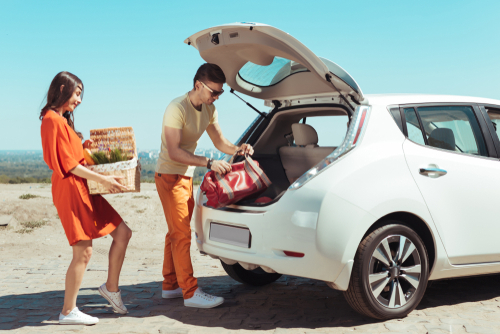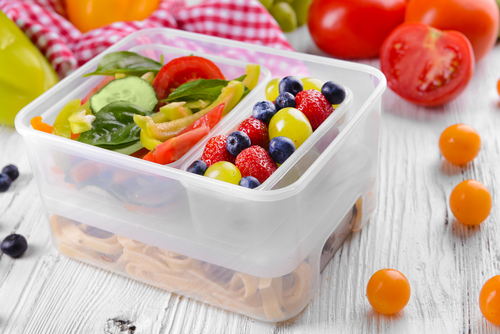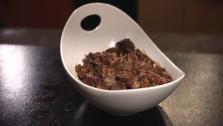The Best Way To Transport Food Without Compromising Sanitation

You don’t eat your meals at home all the time. Aside from dining in restaurants, there are times when you and your family want to spend a day picnicking in the park, or you might have agreed with some friends to gather for a barbecue.
While these are fun times to enjoy good company and good food in an outdoor setting, exposure of food to conditions outside of the home increases the risk of foodborne bacteria. This becomes doubly risky during summertime because bacteria multiply quickly in warm temperatures.
Keeping food safe during transport
Protecting yourself and your family against foodborne illness is crucial. Bacteria lurking in contaminated food can result in:
- Nausea and vomiting
- Diarrhea
- Abdominal cramps
- Fever
- Joint pain

To avoid experiencing these signs and symptoms, here are tips to guide you on how food should be transported, handled, and served.
- Always transport food in appropriate containers. There are many kinds of containers to choose from, but they’re not the same in terms of keeping your food safe and sanitary while in transit. The qualities to look for are:
- Tight-fitting lid to stop spillage
- Not porous to prevent leaks
- Can be easily cleaned
- Sufficiently rigid to protect its contents
- Approved for food use
- Keep foods completely covered at all times while you’re going from one place to another. If a container doesn’t have a lid, you can use a plastic film. You may also utilize should food-grade LBP wrappers that are safe and free of chemicals that could leak into the food. Aluminum foil can also be used.
- Cold food should remain cold. Don’t leave home without the cooler, and be sure it’s sufficiently filled with ice or freezer gel packs. The temperature inside should be kept under 40 °F to prevent the growth of bacteria.
- Similar to cold foods, hot foods should be kept hot to keep bacterial multiplication at bay. Maintaining high temperatures for food safety can be tricky. You can use insulated coolers for this purpose. To get the best results, preheat the container by filling it with hot water in and putting on the cover for about 10 minutes. After you pour out the water, wipe dry. Pack the hot food as quickly as you can. You can top the wrapped food with towels to keep the heat from dissipating.
- Pack meat, seafood, and poultry while they’re still frozen to keep them cold for a longer time.
- Be careful not to cross-contaminate. Juices from raw meat should not leak out and spread to the other foods, especially those that will be eaten raw, such as veggies and fruits. For maximum risk prevention, designate one container for ready-to-eat fare, another for beverages, and a third one for raw meat.
- A food safety rule that’s true for both the kitchen and the outdoors is that raw and cooked food must be kept away from each other.
- Produce must be cleaned before you put them in the cooler. Fruits with firm skins should be rubbed with a vegetable brush under running water and promptly dried with a paper towel. You don’t have to wash prepacked foods from the supermarket that have been prewashed or are labeled as ready to eat.
- Cross-contamination doesn’t only apply to foods but also to utensils. Never use a plate that you earlier held raw meat to serve food that’s already cooked without thorough washing. To be safe, use clean separate platters and utensils for each food item.
- Before handling the food, be sure your hands are clean. Handwashing is fundamental to food safety, but sometimes you have to be reminded to do it. When you’re outdoors, bring a water jug to wash your hands with, along with soap and paper towels, if it’s possible. Otherwise, have disposable wet towels on hand.
- Pay close attention to how long food has been exposed to ambient temperature. Bacteria multiply fast in temperatures between 40 °F to 140 °F. Because of this, food that’s been sitting on the table for more than two hours is no longer safe to eat. If the weather is warmer than usual, lower the time limit to one hour.
- Clean your vehicle prior to the food trip. This step is essential especially if your pet usually takes rides with you. Sanitize the area where the food is placed.
- Devise a plan for your journey and take the shortest and quickest routes. The shorter the time for your trip, the better it is for food safety.
No doubt about it, eating is one of the greatest pleasures of life. This is why you have to make sure that any foodborne illness does not ruin your enjoyment. If you’ve taken the necessary steps to transport your food the right way, you can then focus on having fun with your friends and family once you reach your destination.
Category: Food.Fun.Stuff.









